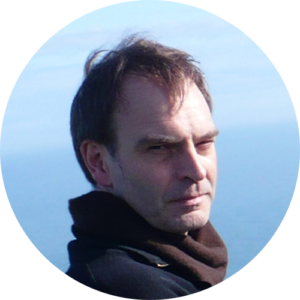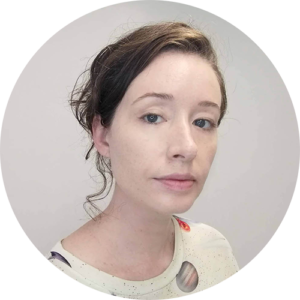NAIA
Naturally Artificial Intelligence Art Association
Opening Keynotes
Eric KLUITENBERG. ReGenerate. Designing the Grand Zoöperation
In 2022 a new ‘institutional design’ was proposed for how human and nonhuman life can work together in a structured process.  In April of that year Nieuwe Instituut, the museum for architecture, design and digital culture became the world’s first Zoöp. As formulated by researcher and curator Klaas Kuitenbrouwer the Zoöp is an organisation model for cooperation between human and nonhuman life that safeguards the interests of all zoë (Greek for ‘life’). The Zoöp model makes the interests of nonhuman life part of organisational decision making.
In April of that year Nieuwe Instituut, the museum for architecture, design and digital culture became the world’s first Zoöp. As formulated by researcher and curator Klaas Kuitenbrouwer the Zoöp is an organisation model for cooperation between human and nonhuman life that safeguards the interests of all zoë (Greek for ‘life’). The Zoöp model makes the interests of nonhuman life part of organisational decision making.
So far five Zoöps exist and independent support structures have been set up to propagate the model further, with several new organisations lining up to also become Zoöps. While the model originates from the creative disciplines (art & design) it leaves the question open exactly how ‘we’ as creative makers, artists, designers, architects, theorists, curators, can and should engage with the design of this great cooperation of all forms of life?
Central within the thinking about this ‘grand zoöperation’ is the idea of new forms of ecological regenerative practices and a nascent regenerative culture – a way of operating in all domains that not only does ‘less harm’, but that directly contributes to improving the ecological conditions and the ecological integrity of a particular site or process: From Net-Zero to Net-Positive.
To create a forum and testing ground for the new creative practices that engage with this nascent regenerative culture we have launched a proposal for a new festival for ecological art & design and regenerative culture, focused specifically on the Green Heart region – a green mostly rural core surrounded by the urban agglomerations of the ‘Randstad’ (Amsterdam, Utrecht, Rotterdam, The Hague, Leiden).
The festival will be conceived from the start as a Zoöp. It is already growing its fine-meshed linkages with the local makers, civic initiatives, agricultural and ecological initiatives and organisations, and a manifold of other-than-human actors in the region. The aim is simple: To find out how regenerative creative processes can be put into practice.
Eric Kluitenberg is a theorist, writer, curator, and educator working at the intersection of art, culture, ecology, and technology.
My professional background was since my student years heavily geared towards the relationship of the creative disciplines with the then emerging digital electronic media (1987-1994) and the subsequent opening up of the internet to the general audience (1994-now).
Since 2010 my interest has shifted more towards engaging with the growing urgency of the degrading ecological conditions that affect many forms of life on this planet, including human life. In the 2010 festival ElectroSmog we investigated the crisis of hyper-mobility in a festival where no one was allowed to travel. Yet, what is then the ecological footprint of the (net based) connections between our local sites, spread in this case over 20 time zones? And how do technology and ecology interrelate as inescapable spheres of life? This was the question in the TechnoEcologies project with RIXC in Riga in 2011/12.
More recently I have become involved in the design and creation of new ways of co-operation between all life forms, human and non-human, in a ‘human-inclusive ecology’, among others through the new organisational model of Zoöps (co-operations of all zoë) developed by researcher and curator Klaas Kuitenbrouwer. This resulted in the Zoöp DataFusion Art/Science research project with Nieuwe Instituut (Rotterdam, 2022), where the Zoöp model originated from. Currently I am developing a new festival for ecological art & design and regenerative cultures focussed specifically on the mostly rural Green Heart region in The Netherlands.
Rosemary LEE. Behind the Algorithmic Image
Algorithms now have a pervasive influence on the production, circulation, and interpretation of images. While novel in some aspects,  these recent developments are connected to much earlier, even analog, geometrical, optical, and procedural methods. In this talk, Rosemary Lee will present her book Algorithm, Image, Art, examining the history, processes, and ideas behind the current abundance of algorithms in visual culture. The book looks at how the production of images in terms of algorithmic instructions has shaped images and art, as well as the values used to assess them, drawing connections between the algorithmic forms of visual media we are familiar with today and the precursors from which they evolved.
these recent developments are connected to much earlier, even analog, geometrical, optical, and procedural methods. In this talk, Rosemary Lee will present her book Algorithm, Image, Art, examining the history, processes, and ideas behind the current abundance of algorithms in visual culture. The book looks at how the production of images in terms of algorithmic instructions has shaped images and art, as well as the values used to assess them, drawing connections between the algorithmic forms of visual media we are familiar with today and the precursors from which they evolved.
Rosemary Lee is an artist and media researcher. Her work considers how image production technologies fit within larger narratives about art, knowledge, and relations between humans and machines. She is currently an artist in residence with the European Media Art Platform hosted by NeMe in Limassol, Cyprus.
Her book Algorithm, Image, Art considers recent developments in artificial intelligence in relation to historical tendencies in image production. That work expands on her PhD project Machine Learning and Notions of the Image, looking into how contemporary artists’ approaches to algorithmic media are connected to longer discourse on the mediation of perception.
Lee’s work has been presented in international contexts related to art and technology including NeMe, transmediale, V2_, gnration, HMKW, the University of Coimbra, AMRO, ONB Labs, Ars Electronica, LOKALE, Kunsthalle Aahus, Click Festival, The Holden Gallery, Kunsthalle Trondheim, Nikolaj Kunsthal, Kunsthal Charlottenborg, c4, Science Friction, LEAP, and Kunsthalle Athena. She is represented by Galerie Gilla Lörcher, Berlin since 2013.
Lee’s artistic research has been supported with fellowships funded by the Austrian National Library, the Danish State Art Fund, the Arts Council Norway, Nordic Culture Point, Copenhagen’s Culture Harbor 365, the Transmediale Vilém Flusser Archive Residency for Artistic Research and the Burning Athens Residency for Art and Critical Theory.